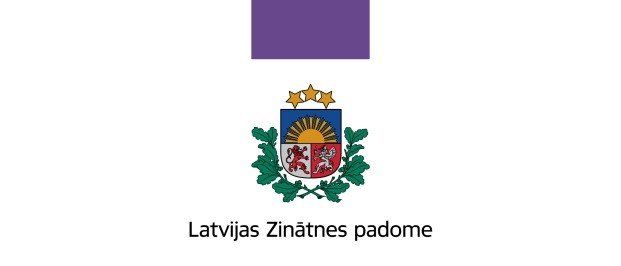This web page is created within BALTICS project funded from the European Union’s Horizon2020 Research and Innovation Programme under grant agreement No.692257.
About project OMG
Name of the Project: Evolution of Organic Matter in the Regions of Star and Planet Formation
Project No.: lzp-2018/1-0170
Project Acronym:
OMG
Accounting Acronym:
z-A.V.
Funded by:
Grant of the Latvian Council of Science
Project Submitter:
Ventspils University of Applied Sciences Institute of Engineering Ventspils International Radio Astronomy Centre (VUAS IE VIRAC)
Project Scientific Supervisor: PhD Antons Vasjunins
Duration:
1/9/2018–31/8/2021 (36 months, 3 reporting periods)
Total Project Funding: EUR 300,000.00
Brief Qualitative Description and Aim of the Project:
The origin of life in the universe is one of the fundamental questions of the modern science. Astrophysical studies of molecules present in the interstellar environment further raise awareness of this issue. Astronomical observations have shown that organic compounds are formed in different stages of the evolution of protostars, including earlier ones.
Despite this, the understanding of the mechanisms and factors affecting the formation of organic substances in space is incomplete. The project application focuses on research on the pathways and evolution of organic compounds in star-forming areas at different stages of their development. The results of the proposed study will complement the knowledge of the conditions of organic matter formation in the Galaxy, key mechanisms and evolution of this process, and of the highest possible complexity of organic compounds that can be achieved in protostars. As part of the project, it is planned to observe and, in theory, study organic compound chemistry at different stages of star formation, from pre-stellar cores to protoplanetary disks, with the help of numerical models. The observation data will be obtained with the radio telescopes of the Ventspils International Radio Astronomy Centre, as well as the world's best radio astronomy instruments. Numerical models for rendering the chemical and dynamic evolution of protostars will be created. The project is directly in line with Latvia’s priority direction in science for 2018–2020: 1. Natural Sciences / 1.2. Physical Sciences / Fundamental Research in Radio Astronomy. The priority direction ‘Technologies, Materials and Systems Engineering for Increased Added-Value Products and Processes, and Cyber Security’ is supported by fundamental research planned in the cryogenic materials theory, by software developed for the modelling of such materials, and by developed software for bringing up radio aerials.
The project shall have five research directions:
- Star-forming region where is a large number of organic compounds (W3 (OH), G34 .24 + 0.13, S235, L1544, etc.), structures and kinetic observations, using data acquired from sightings of methanol maser with VIRAC telescopes and observation data on molecules of these star formations by project outer partners with the world’s most powerful radio-astronomical equipment, for example, IRAM 30 m, NOEMA and ALMA. Determining the location of observed objects relative to other components of the star-forming areas (HII regions, new star objects, jets from new star objects, etc.). The role of these interactions between these components is increasing concentrations of organic molecules. Observations to find out the relationship between different concentrations of complex molecules with the evolution phase of the star and planet-forming objects. Determination of physical conditions for the modelling of observed molecules. The work on cosmic observations will be carried out throughout the project, with the focus on data processing and interpretation in the later stages.
- Development of a three-dimensional microscopic interstellar dust particle ice casing numerical models. Studying the microscopic structure of ice. Assessment of parameters regulating the diffusion of atoms and chemically active radicals in the volume of ice and on the surface of the frosty casing, depending on the structure of the ice; comparison of the numerical results with the experimental data on the diffusion efficiency of atoms and molecules on the surface and volume of interstellar ice analogues. Adaptation of the resulting diffusion efficiency parameters of atoms and radicals for inclusion in macroscopic astrochemical models.
- Modelling the chemical evolution for the vast molecular gas casings of young and massive stars. Studies on the formation of organic molecules, including methanol. Determination of the physical conditions in the area in which these molecules are located; the inherent duration of the molecules presents in the gases and the probability of maser radiation, as well as the comparison of these data with the results of the observations. Iterative adjustment of the model. Integration of atoms and radical diffusion data from the 2nd study into astrochemical models that will study the formation of organic molecules. Study of the dynamics of the initial formation conditions of clouds and the collapse of pre-stellar core nebula, the formation and evolution of organic and prebiotic molecules, including, to the boundary of the formation of the so-called ‘first hydrostatic core’ (protostar nucleus). To address this challenge a pre-stellar core chemically dynamic model will be developed. This will include an improved model of complex organic compounding in cold (gas and dust temperatures around 10 K) interstellar nebulas (Vasyunin & Herbst 2013b, Vasyunin et al. 2017) and Pavlyuchenkov & Zhilkin (2013) single-dimensional hydrodynamic code.
- Numerical modelling studies on the potential for the formation of glycine and organic molecules at different stages of star formation with different cloud mass, size and evolution.
- It is planned to explore the extent to which organic substances are inherited from previous stages of protoplanet disks, which will soon form planets and the importance of synthesis of organic and prebiotic molecules “in situ” in protoplanetary disks.
Contact Information:
Project Administrative Manager – Ieva Kozlova, ieva.kozlova@venta.lv




















